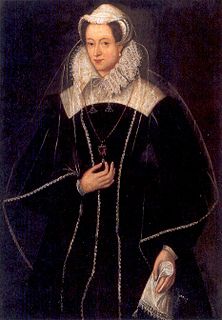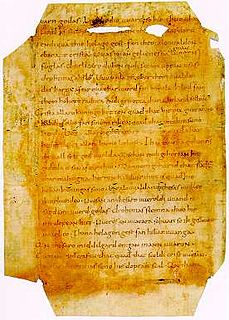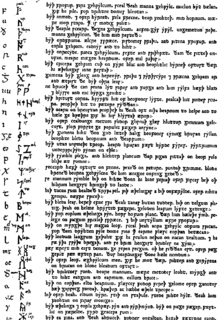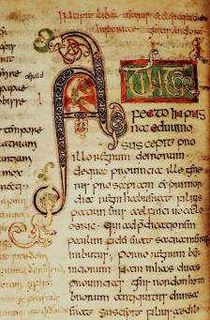 W
WThe Cotton or Cottonian library is a collection of manuscripts once owned by Sir Robert Bruce Cotton MP (1571–1631), an antiquarian and bibliophile. It later became the basis of what is now the British Library, which still holds the collection. After the Dissolution of the Monasteries, many priceless and ancient manuscripts that had belonged to the monastic libraries began to be disseminated among various owners, many of whom were unaware of the cultural value of the manuscripts. Cotton's skill lay in finding, purchasing and preserving these ancient documents. The leading scholars of the era, including Francis Bacon, Walter Raleigh, and James Ussher, came to use Sir Robert's library. Richard James acted as his librarian. The library is of special importance for sometimes having preserved the only copy of a work, such as happened with Beowulf and Sir Gawain and the Green Knight.
 W
WThe Anglian collection is a collection of Anglo-Saxon royal genealogies and regnal lists. These survive in four manuscripts; two of which now reside in the British Library. The remaining two belong to the libraries of Corpus Christi College, Cambridge and Rochester Cathedral, the latter now deposited with the Medway Archives.
 W
WThe Anglo-Saxon Chronicle is a collection of annals in Old English, chronicling the history of the Anglo-Saxons. The original manuscript of the Chronicle was created late in the 9th century, probably in Wessex, during the reign of Alfred the Great. Multiple copies were made of that one original and then distributed to monasteries across England, where they were independently updated. In one case, the Chronicle was still being actively updated in 1154.
 W
W"The Battle of Maldon" is the name given to an Old English poem of uncertain date celebrating the real Battle of Maldon of 991, at which an Anglo-Saxon army failed to repulse a Viking raid. Only 325 lines of the poem are extant; both the beginning and the ending are lost.
 W
WThe Casket letters were eight letters and some sonnets said to have been written by Mary, Queen of Scots, to the Earl of Bothwell, between January and April 1567. They were produced as evidence against Queen Mary by the Scottish lords who opposed her rule. In particular, the text of the letters was taken to imply that Queen Mary colluded with Bothwell in the murder of her husband, Lord Darnley. Mary's contemporary supporters, including Adam Blackwood, dismissed them as complete forgeries or letters written by the Queen's servant Mary Beaton. The authenticity of the letters, now known only by copies, continues to be debated. Some historians argue that they were forgeries concocted in order to discredit Queen Mary and ensure that Queen Elizabeth I supported the kingship of the infant James VI of Scotland, rather than his mother. The historian John Hungerford Pollen, in 1901, by comparing two genuine letters drafted by Mary, presented a subtle argument that the various surviving copies and translations of the casket letters could not be used as evidence of their original authorship by Mary.
 W
WThe Chronicles of the Kings of Mann and the Isles or Manx Chronicle is a medieval Latin manuscript relating the early history of the Isle of Man.
 W
WThe so-called Claudius Pontificals are the texts in British Library, Cotton Claudius A.iii, a composite manuscript of three separate pontificals, i.e. compilations of the services reserved for bishops, especially the coronation of kings. The first two date to the 11th century, the third to the 12th century.foll. 4-6, formerly bound with the Coronation Gospels, contain the "Æthelred confirmation" and the "Edward the Confessor confirmation". Claudius Pontifical I, foll. 31-86, 106-150 ; this early 11th-century book was owned by Wulfstan ; on fol. 31 a commemorative verse in Old English, informing us that this halungboc was bound at the expense of one Thureth, presumably a Northumbrian earl; Claudius Pontifical II, foll. 9-18, 87-105, mid 11th century, contains the Second Anglo-Saxon Ordo; Claudius Pontifical III, foll. 19-29, consists of the Third English Coronation Order, early to mid 12th century.
 W
WThe Athelstan Gospels, or British Library, Cotton MS Tiberius A. ii is a late 9th or early 10th-century Ottonian illuminated Gospel book which entered England as a gift to King Athelstan, who in turn offered it to Christ Church, Canterbury. It is also referred to as the Coronation Gospels on account of an early modern tradition that it had been used as an oath-book at English coronations.
 W
WThe Cotton Genesis is a 4th- or 5th-century Greek Illuminated manuscript copy of the Book of Genesis. It was a luxury manuscript with many miniatures. It is one of the oldest illustrated biblical codices to survive to the modern period. Most of the manuscript was destroyed in the Cotton library fire in 1731, leaving only eighteen charred, shrunken scraps of vellum. From the remnants, the manuscript appears to have been more than 440 pages with approximately 340-360 illustrations that were framed and inserted into the text column. Many miniatures were also copied in the 17th century and are now in the Bibliothèque nationale de France in Paris.
 W
WSir Gawain and the Green Knight is a late 14th-century chivalric romance in Middle English. The author is unknown; the title was given centuries later. It is one of the best-known Arthurian stories, with its plot combining two types of folk motifs: the beheading game, and the exchange of winnings. Written in stanzas of alliterative verse, each of which ends in a rhyming bob and wheel; it draws on Welsh, Irish, and English stories, as well as the French chivalric tradition. It is an important example of a chivalric romance, which typically involves a hero who goes on a quest which tests his prowess. It remains popular in modern English renderings from J. R. R. Tolkien, Simon Armitage, and others, as well as through film and stage adaptations.
 W
WThe Heliand is an epic poem in Old Saxon, written in the first half of the 9th century. The title means saviour in Old Saxon, and the poem is a Biblical paraphrase that recounts the life of Jesus in the alliterative verse style of a Germanic epic. Heliand is the largest known work of written Old Saxon.
 W
WHemming's Cartulary is a manuscript cartulary, or collection of charters and other land records, collected by a monk named Hemming around the time of the Norman Conquest of England. The manuscript comprises two separate cartularies that were made at different times and later bound together; it is in the British Library as MS Cotton Tiberius A xiii. The first was composed at the end of the 10th or beginning of the 11th century. The second section was compiled by Hemming and was written around the end of the 11th or the beginning of the 12th century. The first section, traditionally titled the Liber Wigorniensis, is a collection of Anglo-Saxon charters and other land records, most of which are organized geographically. The second section, Hemming's Cartulary proper, combines charters and other land records with a narrative of deprivation of property owned by the church of Worcester.
 W
WThe Ismere Diploma is a charter of 736, in which Aethelbald of Mercia grants ten hides of land near Ismere to Cyneberht, his "venerable companion", for the foundation of a coenubium (minster).
 W
WThe Liber Eliensis is a 12th-century English chronicle and history, written in Latin. Composed in three books, it was written at Ely Abbey on the island of Ely in the fenlands of eastern Cambridgeshire. Ely Abbey became the cathedral of a newly formed bishopric in 1109. Traditionally the author of the anonymous work has been given as Richard or Thomas, two monks at Ely, one of whom, Richard, has been identified with an official of the monastery, but some historians hold that neither Richard nor Thomas was the author.
 W
WThe Lindisfarne Gospels is an illuminated manuscript gospel book probably produced around the years 715–720 in the monastery at Lindisfarne, off the coast of Northumberland, which is now in the British Library in London. The manuscript is one of the finest works in the unique style of Hiberno-Saxon or Insular art, combining Mediterranean, Anglo-Saxon and Celtic elements.
 W
WMagna Carta Libertatum, commonly called Magna Carta, is a royal charter of rights agreed to by King John of England at Runnymede, near Windsor, on 15 June 1215. First drafted by Archbishop of Canterbury Stephen Langton to make peace between the unpopular king and a group of rebel barons, it promised the protection of church rights, protection for the barons from illegal imprisonment, access to swift justice, and limitations on feudal payments to the Crown, to be implemented through a council of 25 barons. Neither side stood behind their commitments, and the charter was annulled by Pope Innocent III, leading to the First Barons' War.
 W
WThe New Minster Charter is an Anglo-Saxon illuminated manuscript that was likely composed by Bishop Æthelwold and presented to the New Minster in Winchester by King Edgar in the year 966 AD to commemorate the Benedictine Reform. It is now part of the British Library's collection.
 W
WThe Nowell Codex is the second of two manuscripts comprising the bound volume Cotton MS Vitellius A XV, one of the four major Anglo-Saxon poetic manuscripts. It is most famous as the manuscript containing the unique copy of the epic poem Beowulf. In addition to this, it contains first a fragment of The Life of Saint Christopher, then the more complete texts Wonders of the East and Letters of Alexander to Aristotle, and, after Beowulf, a poetic translation of Judith. Due to the fame of Beowulf, the Nowell Codex is also sometimes known simply as the Beowulf manuscript. The manuscript is located within the British Library with the rest of the Cotton collection.
 W
WThe Old English Hexateuch is the collaborative project of the late Anglo-Saxon period that translated the six books of the Hexateuch into Old English, presumably under the editorship of Ælfric of Eynsham. It is the first English vernacular translation of the first six books of the Old Testament, i.e. the five books of the Torah and Joshua. It was probably made for use by lay people.
 W
WThe Old English rune poem, dated to the 8th or 9th century, has stanzas on 29 Anglo-Saxon runes. It stands alongside younger rune poems from Scandinavia, which record the names of the 16 Younger Futhark runes.
 W
WThe Otho-Corpus Gospels is a badly damaged and fragmentary 8th century illuminated manuscript. It was part of the Cotton library and was mostly burnt in the 1731 fire at Ashburnham House. The manuscript now survives as charred fragments in the British Library. Thirty six pages of the manuscript were not in the Cotton collection and survived the fire. They are now in the library of Corpus Christi College, Cambridge.
 W
WThe Owl and the Nightingale is a twelfth- or thirteenth-century Middle English poem detailing a debate between an owl and a nightingale as overheard by the poem's narrator. It is the earliest example in Middle English of a literary form known as debate poetry.
 W
WPearl is a late 14th-century Middle English poem that is considered one of the most important surviving Middle English works. With elements of medieval allegory and dream vision genre, the poem is written in a North-West Midlands variety of Middle English and highly—though not consistently—alliterative; there is a complex system of stanza linking and other stylistic features.
 W
WBritish Library, MS Cotton Tiberius C. II, or the Tiberius Bede, is an 8th-century illuminated manuscript of Bede's Historia ecclesiastica gentis Anglorum. It is one of only four surviving 8th-century manuscripts of Bede, another of which happens to be MS Cotton Tiberius A. XIV, produced at Monkwearmouth–Jarrow Abbey. As such it is one of the closest texts to Bede's autograph. The manuscript has 155 vellum folios. This manuscript may have been the Latin text on which the Alfredian Old English translation of Bede's Ecclesiastical History was based. The manuscript is decorated with zoomorphic initials in a partly Insular and partly Continental style.
 W
WThe Tiberius Psalter is one of at least four surviving Gallican psalters produced at New Minster, Winchester in the years around the Norman conquest of England. The manuscript can now be seen fully online at the British Library website.
 W
WThe Vespasian Psalter is an Anglo-Saxon illuminated psalter decorated in a partly Insular style produced in the second or third quarter of the 8th century. It contains an interlinear gloss in Old English which is the oldest extant English translation of any portion of the Bible. It was produced in southern England, perhaps in St. Augustine's Abbey or Christ Church, Canterbury or Minster-in-Thanet, and is the earliest illuminated manuscript produced in "Southumbria" to survive.
 W
WThe Winchester Psalter is an English 12th-century illuminated manuscript psalter, also sometimes known as the Psalter of Henry of Blois, and formerly known as the St Swithun's Psalter. It was probably made for use in Winchester, most scholars agreeing that the most likely patron was the Henry of Blois, brother of Stephen, King of England, and Bishop of Winchester from 1129 until his death in 1171. Until recent decades it was "a little-studied masterpiece of English Romanesque painting", but it has been the subject of several recent studies.